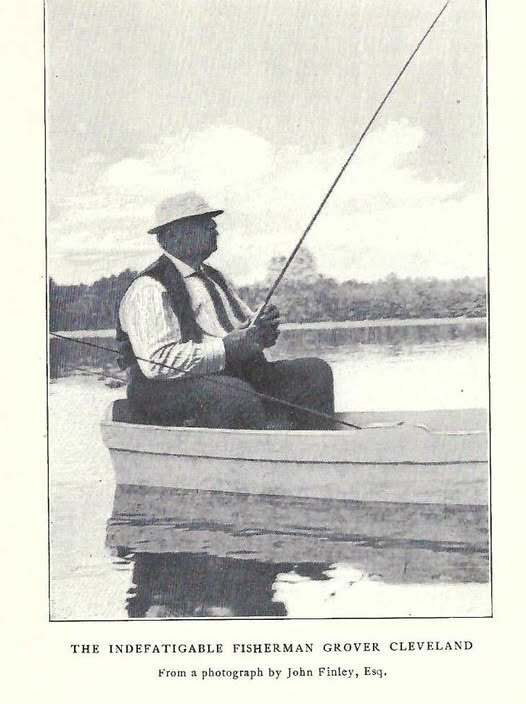
20 Jul Ancestors-Newsletter- June 14, 2025
Contents
 HOUSTONS PAY THEIR DEBTS
HOUSTONS PAY THEIR DEBTS
In several past editions, I wrote about my three times great-grandfather, William Harper Smither. His father, John Smither (pictured), was born on May 27, 1779, in Richmond County, Virginia. He moved to Culpeper County, Virginia, and married Mary Polly Greenway in Chesterfield County, Virginia, on July 18, 1808. He was a Captain in the Virginia Regiment during the War of 1812. He failed in business in Culpeper Co. and then moved in 1824 to Huntingdon, Carroll Co., Tennessee. From there, William Harper moved to Mississippi. John, Mary, and the younger children moved to New Orleans, Louisiana.
In 1839, John and his family relocated to Huntsville, Walker County, Texas, where they assisted their son, Robert, in his mercantile business. They were among the founding families of that area and were acquainted with the Sam Houston family. The store’s ledger was passed down in the family, and it includes General Sam Houston’s account (pictured), showing he owed a balance of $19.24
They lived in Cline’s Prairie community, approximately eight miles northeast of Huntsville, on present-day Farm Road 980, also known as Smither’s Farm Road. The Smither farm was so vast that it extended beyond this community.
When we moved to Texas, I would tell people that I had family in Texas back in the day, near Huntsville, and they would say, “in or out,” and I didn’t get it until I learned that most of the early state prisons were located in Huntsville. Fortunately, it was out, as many were wardens and judges in the area, and Smither Farm Road was named after the work farm established on some of the Smither land.
John died in Huntsville in September of 1860 at the age of 81. Mary died there on October 7, 1867, at approximately 76 years of age. They are both buried in the Huntsville Oakwood Cemetery about 100 paces northwest of Sam Houston’s grave in a wrought iron fenced family plot. Ancestors.
We had a client reach out to us, who had always been told that they were related to Sam Houston (her maiden name). Using her brother James Houston’s Y-DNA (which follows the male line), we were able to determine that their common ancestors were Sam’s Great-Grandparents, John Robert McClung and Margaret Cunningham Houston. James is Sam’s second cousin, five times removed.
We also discovered that before they were Houstons, they were Forbes, meaning there was a non-parental event, where a Forbes impregnated a Houston, likely unknowingly, so the Houston name carried on.
The client surprisingly sent me a Venmo payment of $19.24 to settle Sam Houston’s account. That was good as they typically turned the bills over to collections after 200 years.
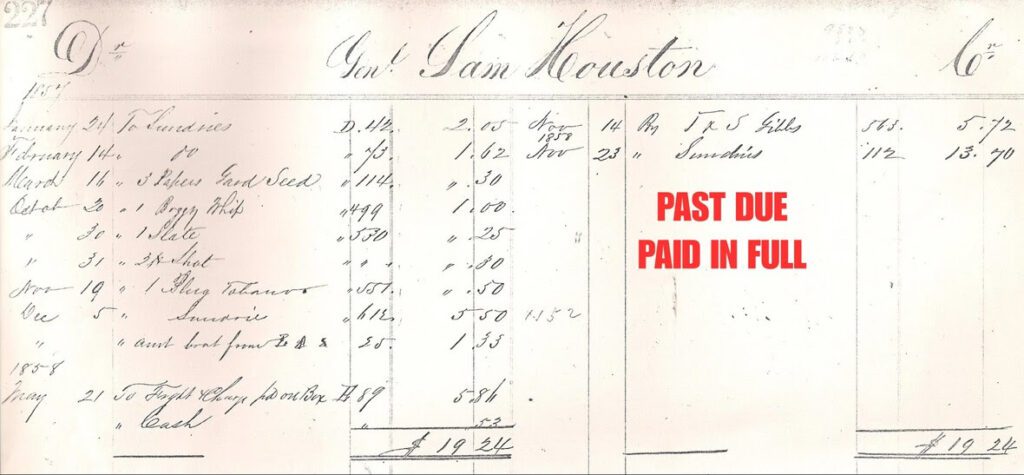
 REEL MEN FISH!
REEL MEN FISH!
One of our client’s ancestors was Benjamin Cave Milam, born in 1821 in Frankfort, Franklin, KY. Ben remained on the farm until he was fourteen years old, when he became an apprentice in the watchmaking and jewelry business.
When Ben was about sixteen years old, he went to Frankfort; he soon became an apprentice to Jonathan Meek, a Frankfort jeweler. In 1839, Jonathan and Benjamin Franklin Meek formed a partnership known as J. F. & B. F. Meek, with B. C. Milam associated with them. It was a watchmaker, Theodore Noel, who had made a fishing reel at Frankfort about 1830, and the manufacture of reels was an incidental part of the business of the firm of J. F. & B.F. Meek. B. C. Milam, not liking watch work, took up the reel business and developed the multiplying reel to its present state of perfection.
On January 1, 1853, B. F. Meek and B. C. Milam formed a new firm as Meek & Milam, continuing the business of jewelers and reel making at the old stand on Main Street. Mr. Milam had the entire charge of and did all the real “reel” work on the second floor above the watchmaking and jewelry establishment. Their partnership agreement stipulated that upon dissolution, the reel-making outfit was to be transferred to Milam. By mutual consent, the partnership was dissolved in 1855, and Mr. Milam continued to head the independent business on the second floor of the old quarters.
During the partnership, the reels were stamped “Meek & Milam.” After the dissolution, the reels retained the same stamp until 1880, a period of twenty-seven years, despite Meek having no interest in the business. The earliest Meek & Milam reels have numbered screws that match the screw hole number stamped in the reel’s headplate.
In 1881, Milam broke off the relationship with Mr. Meek and began making reels under the name B.C. Milam name. The earliest reels do not have serial numbers. Ones made after 1883 were serialized. Ben made his son John a partner in 1890. Reels made between 1896 and 1903 incorporated the phrase “The Frankfort Kentucky Reel” in an arch above the B.C. Milam name. The reels would later be marked B.C. Milam & Son. The most interesting reels made were those with large jewels for the spool bearings. Ancestors.
The reels have been used by three presidents of the United States: Grover Cleveland (pictured at top), William McKinley, and Theodore Roosevelt.
The B.C. Milam & Son Reels were made until 1928 when John Milam passed away. B.C. Milam & Son were very proud of their reels and were always eager to showcase their craftsmanship. They took their reels to the World Expos around the modern world and received recognition and rewards. The Milam reels are very collectible and sought after by fishing enthusiasts.
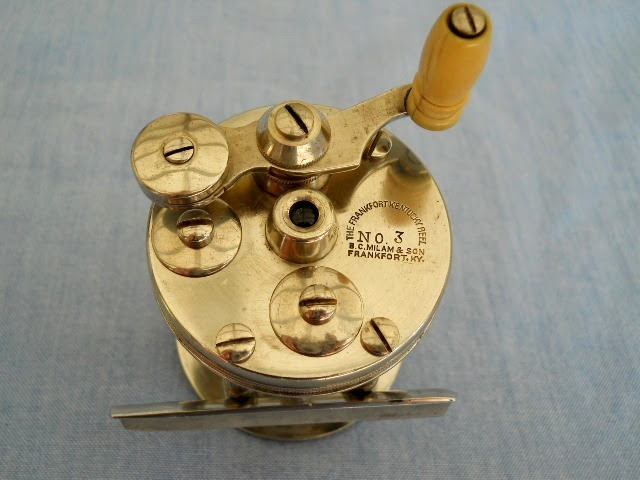
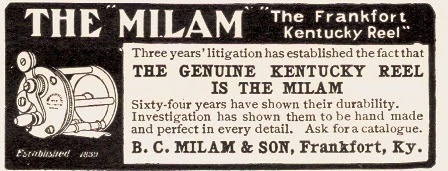
 PRECISION ANCESTRY
PRECISION ANCESTRY
My sister-in-law’s 2nd Great Grandfather, Laroy S. Starrett (pictured), invented and patented the first combination square in 1878. Two years later, he founded the L.S. Starrett Company in Athol, Massachusetts, to produce precision tools and other products. In 1882, Starrett traveled to London and Paris to appoint sales representatives. In 1887, Starrett acquired further patents, and in 1890, L.S. Starrett patented an improved micrometer. In 1895, Starrett patented the divider with a trammel. In 1920, the company added its first gauge to the product line and quickly became the world’s most prominent innovator and maker of precision calibrators. Ancestors.
The company patented such items as the sliding combination square, bench vises, and a shoe hook fastener. It manufactures precision steel rules and tapes, calipers, micrometers, dial indicators, and other related products. In addition, Starrett manufactures a wide variety of saw products, including bandsaws, hole saws, jigsaws, among other power tool accessories and cutting tools. More recently, they have expanded their high-end metrology equipment, including optical comparators, vision systems, laser measurement, force measurement, and material testing.
My sister-in-law remembers her grandmother saying her grandparents had money, but it did not survive the generations in their branch, as is often the case. The company’s CEO is Douglas A. Starrett, and after being publicly held, the company was acquired and went private in 2024.

 DID I HEAR A CANNONBALL?
DID I HEAR A CANNONBALL?
In the May 17, 2025, edition The British are coming!, we covered the British fleet landing at Head of Elk to march overland against the Americans camped outside Philadelphia. In September 1777, General George Washington was encamped in Chadds Ford, which was surrounded by the rolling hills of Pennsbury Township. Crown Force troops under the command of General Knyphausen situated themselves on the Pennsbury side of the Brandywine and engaged Washington’s army.
They met at the Battle of Brandywine and fought on the lands of my wife’s immigrant ancestor, William Harvey. He had built a home around 1715, a 2 1/2— to 3 1/2-story, stone-banked dwelling (pictured). On the map below, you can see the British Route from Head of Elk to Brandywine. Ancestors.
The Harveys were Quakers and pacifists, so a battlefield was not a place they wanted to be. William Harvey Jr. owned the house in the line of fire during the Battle of Brandywine in 1777. A local legend holds that he refused to leave his home until a 12-pound (5.4 kg) cannonball came through the kitchen wall; however, a later register of damages from the British occupation shows a loss of farm animals, hay, and oats, but no claim for household goods. He was compensated for 562 pounds of possessions taken from their home.
His brother Peter Harvey claimed the following items were lost on September 11 and 12, 1777: a two-year-old heifer, a hand saw, one pair of boots, 150 beef salted, one pair of silver knee buckles, a one-year-old calf, one silver stock buckle, one grid iron, one dozen pewter spoons, three dozen silver tea spoons, one pinch of salt, one iron kettle, one and ½ dozen knives and forks, and six tins. His brother, Amos Harvey, also had his home ransacked during the Battle of Brandywine.
The further map shows the William Harvey house on Webb Road, John Chad’s home on the Brandywine, and the Brandywine Battle Park Visitor Center.

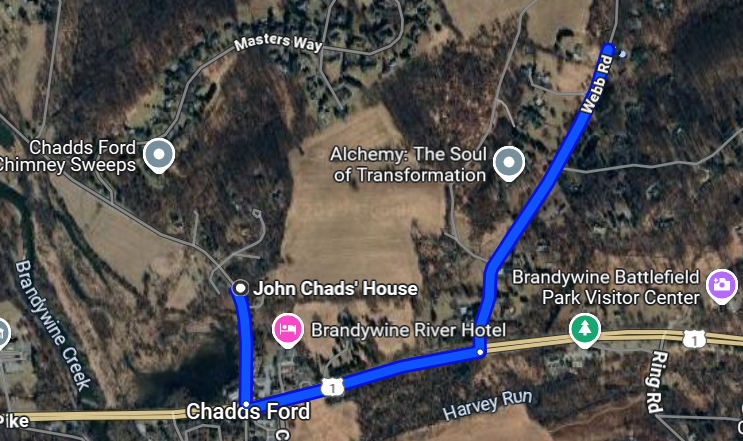
 MORE ON THE ADVENTURES OF J. ADDISON SMITH
MORE ON THE ADVENTURES OF J. ADDISON SMITH
In 1902, J. Addison and Mary Smith rented a home on Dwight Avenue in Ocean Park. Addison was also involved in the Santa Monica Municipal League, which changed its name to become the Santa Monica Board of Trade, where he served with “W. I. Hull, president; R. Fogel, vice-president; J. Addison Smith, secretary, and A. Mooser, treasurer.
This organization has proven vital and has been a key factor in the rapid progress of the past two years. Among some of the achievements of the first year’s real work were the issuing of 20,000 copies of a neat booklet advertising Santa Monica: the publishing of an advertisement of Santa Monica in the Pacific Monthly for six months: efficient aid in the securing of annexation of territory to the city, and in securing better lighting and other improvements for the municipality. In the mid-to-late 1900s, he posted the recorded temperatures from his duties as Secretary of the Board of Trade in the paper every week. Ancestors.
In 1908, their property in Brentwood Park was foreclosed upon by the Bank of Santa Monica, which was valued at $ 3,666. As of 1910, they owned a home in Malibu, Los Angeles, CA, where he is shown to be working in a sporting goods store. I suspect he had a tackle shop, like the one he later had in Santa Monica.
John was struck in 1919 at age 78 by a Pacific Electric rail car and was significantly injured. As of 1920, they resided in the Ocean Park neighborhood of Santa Monica, CA, where she taught at a private school.
Addison died on January 10, 1923, at home in Santa Monica, CA, at age 82 from uremia. His profession was listed as a retired real estate investor. After his death, Mary continued to live with her former son-in-law, Thomas Dudley (more on him in the next edition), while remaining active as the Principal of St. Hilda’s School for Girls and participating in numerous charity events. Mary died on June 7, 1945, in Santa Monica, Los Angeles County, California, at the age of 95. They are buried in the Woodlawn Cemetery.
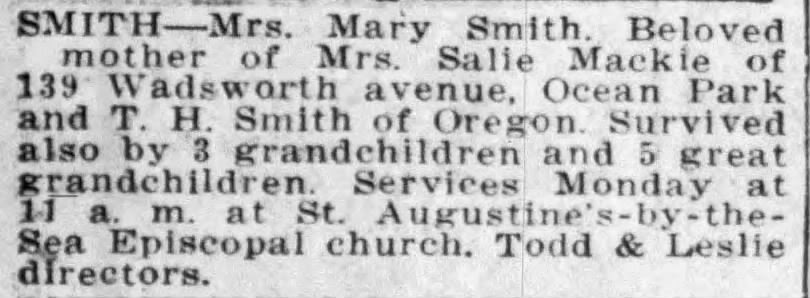
 AN UNDERINFORMED GARDENER ISN’T TAKING CARE OF THE FINAL RESTING PLACE OF A NOTED GARDENER
AN UNDERINFORMED GARDENER ISN’T TAKING CARE OF THE FINAL RESTING PLACE OF A NOTED GARDENER
In November 2024, I shared an article about George Folliott Harison, the New York City horticulturalist who developed the Yellow Rose (of Texas). Yellow Rose While working on a book, I noticed the irony in what is planted around his headstone in NYC.
Virgil Adams at the wheel- Vic Adams with leggons- Luther Adams next to Vick brand new 1927 Model T North Dakota
 PRESERVE YOUR FAMILY HISTORY, TODAY
PRESERVE YOUR FAMILY HISTORY, TODAY
Grandpa was in the yard, wondering if any of his grandkids’ descendants would ever know of him and his life.
Reach out to Dancestors Genealogy. Our genealogists will research, discover, and preserve your family history. No one is getting any younger, and stories disappear from memory every year and eventually from our potential ability to find them.
Preserve your legacy and the heritage of your ancestors.
Paper gets thrown in the trash; books survive!
Ready to embark on your family history journey? Don’t hesitate. Call Dan Nelson and get your project started!


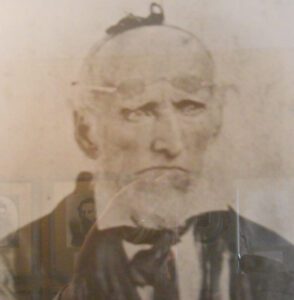 HOUSTONS PAY THEIR DEBTS
HOUSTONS PAY THEIR DEBTS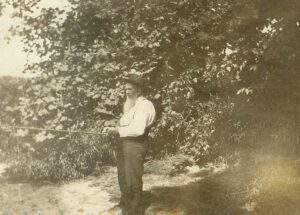 REEL MEN FISH!
REEL MEN FISH!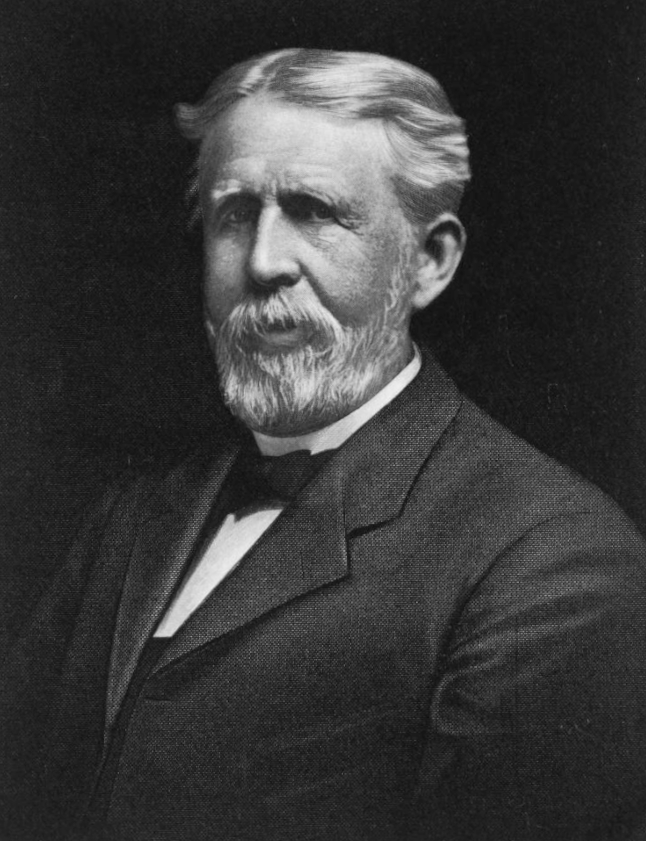 PRECISION ANCESTRY
PRECISION ANCESTRY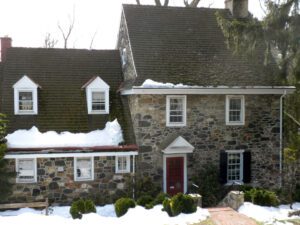 DID I HEAR A CANNONBALL?
DID I HEAR A CANNONBALL? MORE ON THE ADVENTURES OF J. ADDISON SMITH
MORE ON THE ADVENTURES OF J. ADDISON SMITH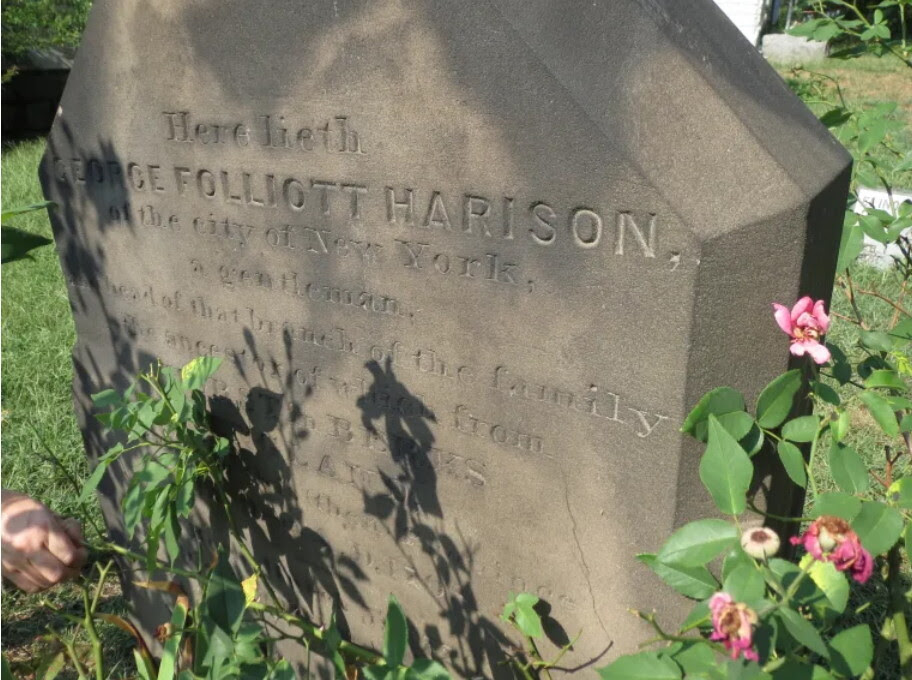 AN UNDERINFORMED GARDENER ISN’T TAKING CARE OF THE FINAL RESTING PLACE OF A NOTED GARDENER
AN UNDERINFORMED GARDENER ISN’T TAKING CARE OF THE FINAL RESTING PLACE OF A NOTED GARDENER PRESERVE YOUR FAMILY HISTORY, TODAY
PRESERVE YOUR FAMILY HISTORY, TODAY